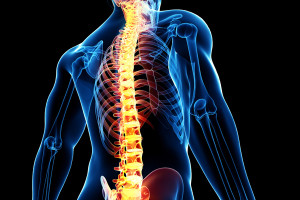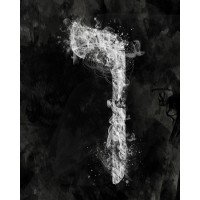The Transformation of Connection: Eshet Chayil (Part 19)
By Sara Esther Crispe: February 10, 2016: Category Decoding the Tradition, Inspirations
Vatakam beod layla vatiten teref lebeita vachok lanaaroteha
“She rises while it is still night, and gives the torn-off portion of food to her household and sets out tasks for her helpers.”
 When we started our educational non-profit, Interinclusion, we wanted a tag line that would sum up what we are all about. We decided on: “It’s all connected; we’re all connected.”
When we started our educational non-profit, Interinclusion, we wanted a tag line that would sum up what we are all about. We decided on: “It’s all connected; we’re all connected.”
The goal of what we do is to find the underlying unity in everything we see, hear and experience. Be it what is happening in the news, a blockbuster movie, artwork, a scientific or medical breakthrough or the latest fad, there is a message for our personal lives and for us as a greater whole. The goal is finding what it is that ties it and us all together and exploring that so we can better understand ourselves and one another.
In today’s day and age, true connection is hard to come by. We spend hours of our days on social media, speaking through text or email, but rarely seeing and communicating face to face. While we are definitely “connected” online, we are so far from connected when it comes to being real.
And a relationship where one types and rarely speaks and hardly ever, if ever, sees one another, is not true connection. The last verse of Eshet Chayil was about being out in the middle of the sea and reaching over, putting out your hand, and pulling another aboard. To be there for another often requires being there for another. And when connection is lacking, communication suffers and we end up feeling extremely alone.
As previously discussed, the Torah begins with the letter Beit which is numerically equivalent to two, to remind us that we were not created to be alone. We were created to connect. To be there for another. To allow another to be there for us.
The Hebrew letter which begins this verse is the letter Vav. As each letter is also a word, the word vav means ‘hook’ which is the very concept of connection. It is even known as “Vav HaChibur” the Vav of connection. And the actual form of the Vav looks like a hook in that it is a straight line that curves at the top, allowing it to lock itself with another.
Grammatically, the Vav is a letter of conjunction. It serves to bind two things together. It is the ‘and’ of the sentence. I remember learning in a philosophy course I took in college the text of Martin Buber’s Ich und Du which is translated as I and Thou and the main point was that the “and” was the most important part. More than me and more than you is the ‘and’ that connects us together.
On the body, the Vav is represented by the spine. When the spine is aligned, then everything can properly function. When the spine is not straight, then the rest of the body suffers. The spine is also the hook of connection in the body. It begins at the base of the skull and continues to the pelvis which connects the head, to the heart (body) to the reproductive organs. Essential, the Vav then is the ongoing connection that one must have between his thoughts, feelings and actions.
The very first time the letter Vav appears in the Torah (which is its foundational occurrence) is in the phrase “Hashamayim V’ Haaretz” which appears in the opening line of the Torah (Genesis 1:1), meaning, the “Heavens and the earth.” The form itself of the Vav is explained as a human being standing upright with his hands in the air reaching to the heavens and his feet firmly planted on the ground. In this verse, it is the 6th word in the very first verse of the Torah and the Vav is numerically equivalent to 6. It is also the 22nd letter in the verse and there are 22 letters in the alphabet which can be seen as a message that all of the letters, the building blocks of communication and the world, are connected.
The Chassidic masters would teach that the purpose of our lives is to create a dira b’tachtonim, a dwelling place in this world for Divinity. That we need to be able to connect heaven and earth. That is why we are here.
There is even a beautiful illusion that the heaven and earth that are connected relate to a husband and wife. That when we unify, when we truly connect on all levels, that we fulfill the purpose of creation. Just as we were created to connect, we were created to create, and when we become a basar echad, one united flesh, this is what takes place. Again, this is how mind, heart and body must come together.
As the Vav is numerically equivalent to six, it also represent (amongst other things) the six days of the week. The week is compared to the earth, whereas following these six days comes the Sabbath, Shabbat, compared to the heavens. During the week we are productive, we work, we do and we make, but we bring that all together when we stop and we recognize why we do what we do. And the why is all about the connection we have in our lives. It is the time to focus on those we care about, those we love, and a time to connect to ourselves and our Creator.
The number six is also an illusion to the six spatial directions. Often we find in life that we are being pulled in all these directions at once. Up, down, left, right, front and back. And yet, as long as everything has a healthy, stable and straight core, then we can move in all the other directions and remain connected to our true selves. So too, when the spine is aligned, the rest of our body, with its many purposes and functions, can do what it needs to do.
Perhaps most incredible about the letter Vav is not only its ability to connect, but its ability to transform. And even more so how connection leads to transformation.
 Grammatically, the letter Vav is known both as Vav HaChibur, the ‘Vav of connection,’ and as Vav HaHipuch, grammatically described as the ‘Vav of reversal’ in that it can change past tense to future tense and future tense to past tense. To practically explain this we have numerous of examples in the text of the Torah. In Genesis 1:6 we have the word ‘yomar’ which means ‘he will say’ (future tense), but when the Vav is added as we have in Genesis 31:8 ‘vayomer’ meaning ‘and he said’ (past tense). Likewise, the word ‘ahavta’ in Genesis 22:2 means ‘you loved’ (past) but when the Vav is added in Leviticus 19:18 it becomes ‘ve’ahavta’ meaning ‘you shall love’ (future) tense.
Grammatically, the letter Vav is known both as Vav HaChibur, the ‘Vav of connection,’ and as Vav HaHipuch, grammatically described as the ‘Vav of reversal’ in that it can change past tense to future tense and future tense to past tense. To practically explain this we have numerous of examples in the text of the Torah. In Genesis 1:6 we have the word ‘yomar’ which means ‘he will say’ (future tense), but when the Vav is added as we have in Genesis 31:8 ‘vayomer’ meaning ‘and he said’ (past tense). Likewise, the word ‘ahavta’ in Genesis 22:2 means ‘you loved’ (past) but when the Vav is added in Leviticus 19:18 it becomes ‘ve’ahavta’ meaning ‘you shall love’ (future) tense.
The message here is incredible. When we are connected–to ourselves, to those around us and to our Creator–we can change anything and everything. We can take something seemingly negative from our past and catapult us into a positive and healthy future. And we can take something that will happen and use it to retroactively shift and change something that was seemingly over and done with in the past.
Connection is the key to change. The key to transformation. And the key to our stability, our strength and our relationships. And this is why the verse speaks of the woman of valor who rises while it is still night, for she knows the potential of the darkness and how with the right focus and the strong connections she maintains with all those in her life, she can both utilize that darkness and transform it into light.
http://www.interinclusion.org/inspirations/investing-in-our-future-eshet-chayil-part-20/
http://www.interinclusion.org/inspirations/transforming-ourselves-eshet-chayil-part-18/
The Transformation of Connection: Eshet Chayil (Part 19),














;)
;)
;)
;)
;)
;)
;)
;)
;)
